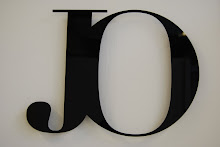Visual merchandising, until recently called simply merchandising, is the activity of promoting the sale of goods, especially by their presentation in retail outlets.(New Oxford Dictionary of English, 1999, Oxford University Press). This includes combining product, environment, and space into a stimulating and engaging display to encourage the sale of a product or service. It has become an important element in retailing that is a team effort involving senior management, architects, merchandising managers, buyers, the visual merchandising director, designers, and staff. Visual merchandising starts with the store building itself. The management decides on the store design to reflect the products the store is going to sell and how to create a warm, friendly, and approachable atmosphere for its potential customers.
Many elements can be used by visual merchandisers in creating displays, including colour, lighting, space, product information, sensory inputs such as smell, touch, and sound as well as technologies such as digital displays and interactive installations.
Visual merchandising is not a science; there are no absolute rules. It is more like an art in the sense that there are implicit rules but that these also exist to be broken for striking effects. The main principle of visual merchandising is that it is intended to increase sales, which is not the case with a "real" art.
Visual merchandising is one of the final stages in trying to set out a store in a way that customers will find attractive and appealing and it should follow and reflect the principles that underpin the store’s image. Visual merchandising is the way one displays 'goods for sale' in the most attractive manner with the end purpose of making a sale. "If it does not sell, it is not visual merchandising."
Especially in today’s challenging economy, people may avoid designers/ visual merchandisers because they fear unmanageable costs. But in reality, visual merchandisers can help economies by avoiding costly mistakes. With guidance of a professional, retailer can eliminate errors, saving time and money. It is important to understand that the visual merchandiser is there, not to impose ideas, but to help clients articulate their own personal style.
Visual merchandising is the art of implementing effective design ideas to increase store traffic and sales volume. VM is an art and science of displaying merchandise to enable maximum sale. VM is a tool to achieve sales and targets, a tool to enhance merchandise on the floor, and a mechanism to communicate to a customer and influence his decision to buy. VM uses season-based displays to introduce new arrivals to customers, and thus increase conversions through a planned and systematic approach by displaying stocks available.

No comments:
Post a Comment